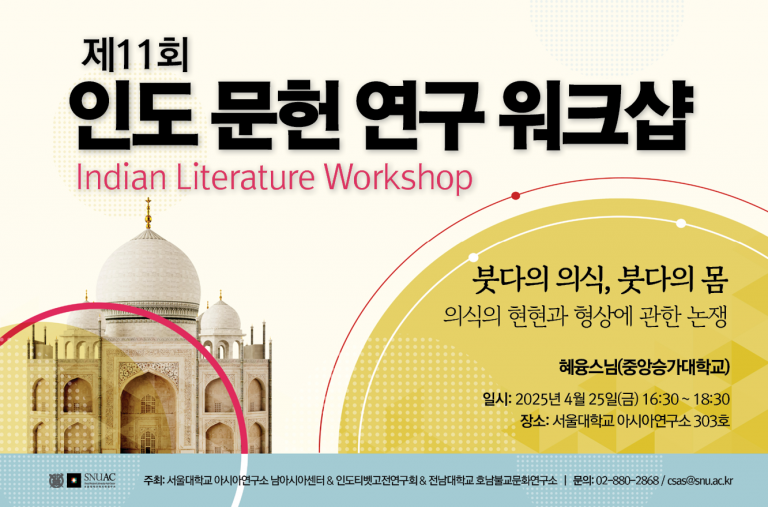The 11th Indian Literature Workshop: Buddha’s Consciousness, Buddha’s Body – Debates on the Manifestation and Form of Consciousness

- Date: April 25th, Friday, 2025, 16:30 – 18:30
- Location: Room 303, SNUAC (Bldg. 101)
Presenter: Hyeyung (Joong-Ang Sangha University)
